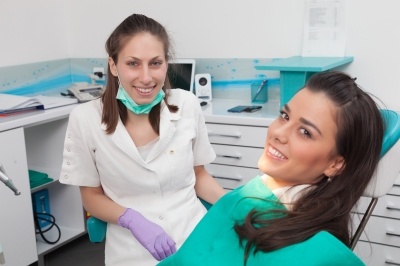
Gum disease or more technically periodontal disease is still the leading cause of teeth loss throughout the world. Poor dental health, especially of the gums accounts for 20 per cent of all tooth losses in adults (Petersen et al., 2005). It places an enormous burden on dental services.
The disease is characterised by bone loss and destruction along with inflammation of the peridontium and damage to the connective tissues (Liu et al., 2013). The periodontium incidentally consists of the epithelial tissues with soft and mineralised connective tissues.
Periodontitis, the disease mentioned earlier involves inflammation of the gums around the tooth. It is a prominent consequence of plaque formation around the base of the tooth. The most prominent element of this gum disease is alveolar bone loss (ABL) which leads to loosening of the tooth (Behl et al., 2008; Graves et al., 2011). There is also periodontal ligament damage. Preceding bone loss is demineralisation of the cementum, loss of the gingiva, breakdown of the connective tissues mainly made up of collagen and plenty of inflammatory infiltration (Benatti et al., 2009).
Bone undergoes a remodelling process which is simultaneously regulated and controlled by two groups of cells, the osteoclasts and osteoblasts. The osteoclasts produce bone resorption whilst the osteoblasts induce, even initiate bone formation (Matsuo, 2009). The osteoblasts have a number of functions which also include deposition and mineralisation of bone tissues (Phan et al., 2004). The combination helps keep bone structure. Unfortunately, periodontal bone disease disrupts the double actions of both cell types, producing alveolar bone loss (Kim et al., 2014).
There are now a range of drugs available to take over or influence the modulating role of bone formation and resorption. They include protease inhibitors, bone sparing and anti-inflammatory drugs which ultimately treat periodontitis (Elavarasu et al., 2014). Reducing the destructive elements of the disease are the most important features. It must be recognised that gum disease is prompted by bacterial infection which initiates a host derived immune-inflammatory response. Support for a host based modulating therapy has been exploited with mouth washes and other drugs (Preshaw, 2008).
Anti-inflammatory drugs such as aspirin and ibuprofen inhibit the production and secretion of prostaglandins their associated inflammation cytokines. Unfortunately, not everyone can take these drugs because they have an impact on the stomach or cause other gastrointestinal issues including bleeding or cause acute renal and hepatic damage and disruption (Bhatavadekar and Williams, 2009). Another method of dealing with the situation is to take antibiotics which attack and reduce the pathogenic bacteria but the alveolar bone loss is not recovered (Walker, 1996).
In more recent times, anti-resorptive drugs inhibit alveolar bone loss (ABL) and actually reduces the risk of osteonecrosis, especially of the jaw (Ponzetti et al., 2015).
We will look at other remedies in this article at a later date.
References
Behl, Y., Siqueira, M., Ortiz, J., Li, J., Desta, T., Faibish, D., Graves, D.T., (2008) Activation of the acquired immune response reduces coupled bone formation in response to a periodontal pathogen. J. Immunol. 181, pp. 8711–8718.
Benatti, B.B., Silverio, K.G., Casati, M.Z., Sallum, E.A., Nociti, F.H., Jr., (2009) Inflammatory and bone-related genes are modulated by aging in human periodontal ligament cells. Cytokine 46, 176–181.
Bhatavadekar, N.B., Williams, R.C., (2009) Modulation of the host inflammatory response in periodontal disease management: exciting new directions. Int. Dent. J. 59, pp. 305–308.
Elavarasu, S., Sekar, S., Murugan, T., (2012) Host modulation by therapeutic agents. J. Pharm. Bioallied. Sci. 4, S256–S259.
Kim, J.H., Lee, D.E., Gunawardhana, K.S., Choi, S.H., Woo, G.H., Cha, J.H., Bak, E.J., Yoo, Y.J., (2014) Effect of the interaction between periodontitis and type 1 diabetes mellitus on alveolar bone, mandibular condyle and tibia. Acta Odontol. Scand. 72, pp. 265–273.
Liu, J., Zhao, J., Li, C., Yu, N., Zhang, D., Pan, Y. (2013) Clinical and microbiologic effect of nonsurgical periodontal therapy on patients with chronic or aggressive periodontitis. Quintessence Int. 44, pp. 575–583.
Matsuo, K., (2009) Cross-talk among bone cells. Curr. Opin. Nephrol. Hypertens. 18, pp. 292–297.
Petersen, P.E., Bourgeois, D., Ogawa, H., Estupinan-Day, S., Ndiaye, C. (2005) The global burden of oral diseases and risks to oral health. Bull. World Health Organ. 83, pp. 661–669.
Phan, T.C., Xu, J., Zheng, M.H., (2004) Interaction between osteoblast and osteoclast: impact in bone disease. Histol. Histopathol. 19, pp. 1325–1344.
Ponzetti, A., Pinta, F., Spadi, R., Mecca, C., Fanchini, L., Zanini, M., Ciuffreda, L., Racca, P., (2015) Jaw osteonecrosis associated with aflibercept, irinotecan and fluorouracil: attention to oral district. Tumori. http://dx.doi.org/10.5301/tj.5000405.
Preshaw, P.M., 2008. Host response modulation in periodontics. Periodontol. 2000 48, pp. 92–110.
Walker, C.B., (1996) The acquisition of antibiotic resistance in the periodontal microflora. Periodontol. 2000 10, pp. 79–88

I’ve had some appalling problems with my teeth which I put down to too much drinking of sugary beverages. Sounds daft but I have false teeth nowadays.